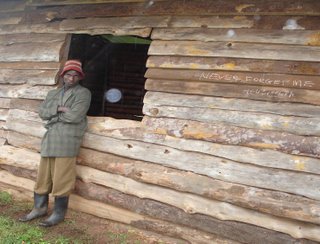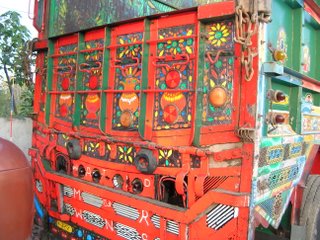Thoughts on Kazinga Channel
 This past week we have been running one of our 5 day training courses for newly selected volunteers in a sub-county that sits just on the edge of the western section of the Rift Valley that reaches up between Tanzania, Uganda and Zaire. Like the more photographed eastern section of the Rift Valley in Kenya it contains a number of crater lakes, salt lakes and spectacular views. Here we are situated on the sheer escarpment rising high above the floor of the valley which holds the stunning Queen Elizabeth National Park. The Ruwenzori Mountain range, first called the Mountains of the Moon by Ptolemy leading everyone to wonder from whence he obtained the information, lies further to the west.
This past week we have been running one of our 5 day training courses for newly selected volunteers in a sub-county that sits just on the edge of the western section of the Rift Valley that reaches up between Tanzania, Uganda and Zaire. Like the more photographed eastern section of the Rift Valley in Kenya it contains a number of crater lakes, salt lakes and spectacular views. Here we are situated on the sheer escarpment rising high above the floor of the valley which holds the stunning Queen Elizabeth National Park. The Ruwenzori Mountain range, first called the Mountains of the Moon by Ptolemy leading everyone to wonder from whence he obtained the information, lies further to the west. It has taken a while, but Uganda seems to be winning back the tourists that were lost during Idi Amin’s time. As Mbarara is so close to the park, it makes a great weekend trip, one that I try to make with each visit. With the popularity of the park increasing , so have the prices and our last minute planning reveals the park lodge is fully booked for the weekend, so we arrange to go on Friday for a one day trip. It is a great bargain. I am picked up from the health center in Rugazi about three quarters of an hour from the park, where I have been staying for the week. After milk tea and a chapati in a nearby stall, I am ready with suntan lotion, water bottle and hat in hand.
We have rented a driver and vehicle for the two days and organized to take both the cruise of the Kazinga Channel in the evening and an early morning game drive. We are just
 heading down from the tarmac road to Mweya Safari Lodge and before we even arrive at the park gates we spot a meandering herd of elephants crossing the road heading for the water. Mostly we have great views of their backsides among the Euphorbia trees. There are a number of stragglers, young males who hang around the edges of the herd until they are big enough to challenge the leader. At this time in their lives they are not very happy fellows. I am using the video feature on my digitial camera but am capturing little of interest as the elephants seem mainly to be browsing. Then a single medium sized elephant not far from the land cruiser turns around so his tusks can be seen. I am elated to have something more than their rear ends in my sights. He even swings one foot over the other and starts shaking his head, his trunk swaying from side to side. And before we know it he is waving his ears rapidly and heading towards us faster than his lumberin
heading down from the tarmac road to Mweya Safari Lodge and before we even arrive at the park gates we spot a meandering herd of elephants crossing the road heading for the water. Mostly we have great views of their backsides among the Euphorbia trees. There are a number of stragglers, young males who hang around the edges of the herd until they are big enough to challenge the leader. At this time in their lives they are not very happy fellows. I am using the video feature on my digitial camera but am capturing little of interest as the elephants seem mainly to be browsing. Then a single medium sized elephant not far from the land cruiser turns around so his tusks can be seen. I am elated to have something more than their rear ends in my sights. He even swings one foot over the other and starts shaking his head, his trunk swaying from side to side. And before we know it he is waving his ears rapidly and heading towards us faster than his lumberin g shape would suggest was possible. Elephants of his size can overturn vehicles and do considerable damage when they charge, so our driver jerks into gear and floors it. Our hearts are pounding.
g shape would suggest was possible. Elephants of his size can overturn vehicles and do considerable damage when they charge, so our driver jerks into gear and floors it. Our hearts are pounding. Later when I view my video, I find I have a great minute or two of the start of his charge, ears flapping, head swaying back and forth and trunk swinging wilding, and then I have two minutes of the floor and the inside of the vehicle with excited dialogue. I am not cut out to be a news photographer because when I have the image of my photographic career right in front of me, I forget to keep tapeing. My colleagues say that the very audible pandemonium in the car makes the clip more real. I wish I knew how to insert it onto the blog so you could all see.

This turns out to be the highlight of our game viewing. We see Uganda cob springing about on the savannah, Cape buffalo wallowing at the water edge, wart hogs scurrying around with their tails high in the air, a pair of water buck rushing at each other butting antlers until one backs down, hippos frolicking in the water in the midday heat, Nile crocodiles resting on the water edge and large groups of elephants but the charging bull elephant is what we all talk about.
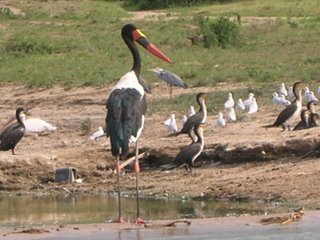
The river cruise that takes us up the Kizinga Channel is just before sundown. We pass hippos and I capture one yawning and several young ones playing with open mouths as if to bite one another. African fish eagles sit high up in the trees overlooking the water. Huge numbers of pied kingfishers hover above the water dipping sharply down as they dive for fish. Several massive hammerkop nests sit in the forks of tree, one of which still has a nesting hammerkop alight. Even with the naked eye, when the launch draws near the papyrus edges can we see the tiny, iridescent malacite kingfishers flitting about. There is one flat area that hosts pelicans, cormorants, herons, sacred ibis and even a couple of saddle-bill and yellow billed storks
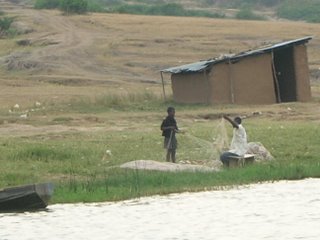
To the edge of this brilliant display of ornithological delight is one of the fishing villages on the Kazinga channel where a young boy and his father check their nets, locally made boats line the shore and at the end of the day groups of young children run down to the water edge to collect their daily water supply in plastic yellow and green jerry cans from the water. Here we are in this world class park, this global repository of our biological diversity, and people still have no safe source of drinking water. What in the world is the matter with us? In the fishing villages served by the referral Health Center to which our volunteers report, there are frequent outbreaks of cholera. I am certain it happens here as well.
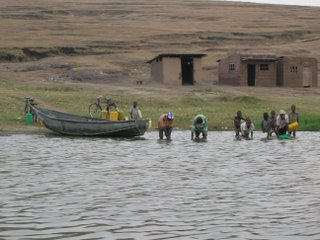
Now I know as well as anyone that most of the rural areas in this part of the country have poor access to potable water. That despite three WHO supported worldwide Water Decades we are a long way from providing safe water for the developing world. I do not know if wells have been tried or even if it is possible here. I have heard lots about the problems with biosand filters and other technology. And while the technological problems can be solved, the social problems are more difficult. I know next to nothing about the situation in this village.

It is totally irrational, but floating on a tourist launch past the spectacle of people collecting this polluted water for drinking offends me. I want an immediate tax levied on all of us well-heeled tourists. I really do. And then I realize that irrational as this feeling is that it may in the end get these people a better drinking water supply. If people like us continue to be offended by what we do see, if it continues to bother us and we tell others about it, it will get fixed. And if we can just start with what we can see, our eyes will be opened and we will see more. This is what Marshall McLuhan predicted in the Medium is the Message. With the explosion of communication, especially on the internet, this is what seems to be happening. But as they say in Uganda, mpola mpola, slowly by slowly.
Labels: Uganda




